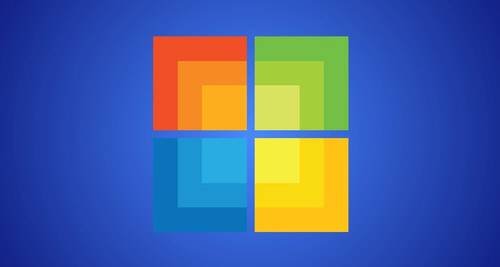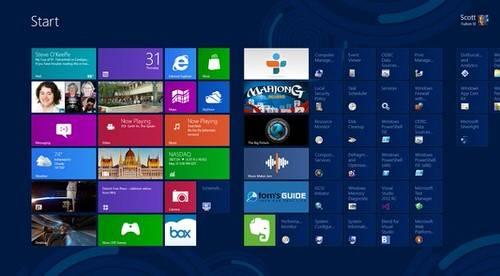
Microsoft’s Windows 8 balances the old way of doing things — the Windows desktop — with the tiled, touch-enabled “Metro” interface. With a new “Windows Blue” build that leaked over the weekend, Microsoft is inexorably pushing users toward the new user interface.
Reports from the Verge and elsewhere indicate that the changes are, by and large, incremental — the ability to snap four applications on screen at the same time, new settings menus within the Windows 8 Metro environment, charms that include “Play,” a sound recorder, and a microphone, plus IE11.
The latter appears to include the ability to share tabs with Windows Phone, also scheduled to be upgraded as part of the “Blue” update. Mary Jo Foley at ZDnet also says that leaked data also indicate that “Blue” will be applied to Windows RT, as well.
Faster, Yes. But Better And Stronger?
For years, Microsoft left the Windows world relatively static. Major and minor updates were applied in conjunction with service packs, but at other times Windows could be counted upon to remain relatively stable.
While that may have been appreciated by conservative corporations that extensively test new code changes, that approach appears to be changing. Microsoft appears to be reluctantly influenced by the quick, iterative pace of Web services from Google and others. We already know that Office 365 will be updated and upgraded regularly, eventually leaving the retail version of Office 2013 in the dust.
With Blue, it appears that Microsoft’s desktop software may be moving in this direction, as well. And that has significant implications for how Microsoft is treating its two user interfaces.
No Backing Away From “Metro”
As any Windows 8 user knows, Microsoft maintain two user interfaces: the Windows 7-like desktop, and the Windows 8 “Metro”-styled interface. Certain applications straddle both environments; Internet Explorer, for example, can either be opened in the desktop, complete with its own address bar; or via Metro, where navigation elements are downplayed. Others favor one or the other: the so-called Metro apps only run under Microsoft’s tablet UI, while legacy apps require the desktop.

“Traditionalists” usually consider the Metro interface to be bolted on to the traditional desktop, while those that have embraced Microsoft’s new approach sometimes regard the desktop as a legacy UI, like an appendix.
But if you had any hopes that Microsoft might be backing away from Metro, forget them. In fact, if you look at Windows 8 as a transitional operating system, then Blue represents the balance tilting farther and farther in Metro’s favor.
Now, this doesn’t necessarily mean that Microsoft is shifting farther away from the desktop, further isolating traditionalists. To its credit, Microsoft is making the shift by making the Metro environment more useful and thus encouraging users to become more familiar with it, rather than devaluing the old desktop environment. (Surveys originally found the Metro environment to be confusing to use, and Windows 8 has been blamed for poor PC sales in the third and fourth quarters.)
As Mary Jo Foley and others have noted, Blue represents closer ties between the Windows desktop and the Windows Phone environment, if the reports of sharing tabs between the mobile and desktop versions of Internet Explorer turn out to be true. In this, Microsoft may be somewhat behind Google. This is probably less significant than Microsoft tying Skype and its Office suite to Windows Phone, however.
Eventually, Microsoft will most likely either kill off the legacy desktop from Windows 8 or else integrate it in such a way that the two interfaces will meet in the middle. How will that play out? At this point, we can’t be sure. But that apparently won’t happen in Blue, at least in its early days.
What Do We Want From Blue? UI Modes
There’s nothing implicitly wrong with Metro, of course; as a tablet interface, it works quite well. And since Windows 8 is basically an updated version of Windows 7, the two interfaces go hand-in-hand quite well.
For most people, simply reconciling the schizophrenic nature of Windows 8 into something of a cohesive whole would probably go a long way toward satisfying the user base. Easier said then done, though — it’s hard to combine Windows widgets/tiles and a desktop interface without moving back into the Windows Vista context, and we all know how that worked out.
What we may be moving toward, with common code shared between Windows Phone and Windows 8, is an environment where the same information and apps could eventually be reformatted for the phone, tablet or desktop. So far, that’s a promise Microsoft has yet to deliver on. But Windows Blue may be an important down payment on it, just by encouraging adoption of the new user interface.
Image Source: Techpinions










